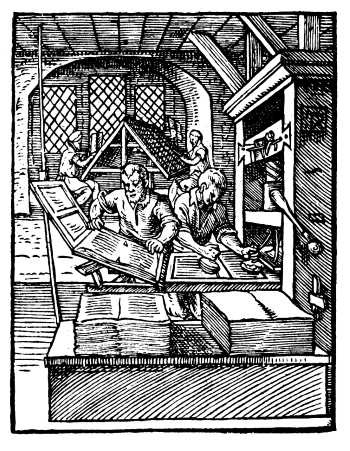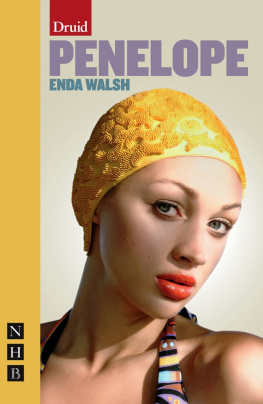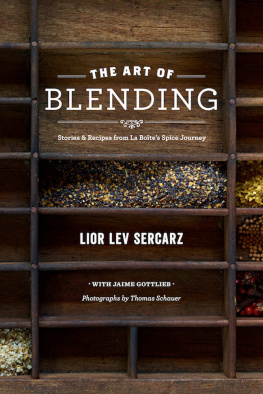Joseph M. Walsh - Tea-blending as a Fine Art
Here you can read online Joseph M. Walsh - Tea-blending as a Fine Art full text of the book (entire story) in english for free. Download pdf and epub, get meaning, cover and reviews about this ebook. year: 2019, publisher: Good Press, genre: Science. Description of the work, (preface) as well as reviews are available. Best literature library LitArk.com created for fans of good reading and offers a wide selection of genres:
Romance novel
Science fiction
Adventure
Detective
Science
History
Home and family
Prose
Art
Politics
Computer
Non-fiction
Religion
Business
Children
Humor
Choose a favorite category and find really read worthwhile books. Enjoy immersion in the world of imagination, feel the emotions of the characters or learn something new for yourself, make an fascinating discovery.

- Book:Tea-blending as a Fine Art
- Author:
- Publisher:Good Press
- Genre:
- Year:2019
- Rating:3 / 5
- Favourites:Add to favourites
- Your mark:
- 60
- 1
- 2
- 3
- 4
- 5
Tea-blending as a Fine Art: summary, description and annotation
We offer to read an annotation, description, summary or preface (depends on what the author of the book "Tea-blending as a Fine Art" wrote himself). If you haven't found the necessary information about the book — write in the comments, we will try to find it.
Tea-blending as a Fine Art — read online for free the complete book (whole text) full work
Below is the text of the book, divided by pages. System saving the place of the last page read, allows you to conveniently read the book "Tea-blending as a Fine Art" online for free, without having to search again every time where you left off. Put a bookmark, and you can go to the page where you finished reading at any time.
Font size:
Interval:
Bookmark:

INTRODUCTION.
There is no article handled by the grocer which demands greater attention, engages more of his time, or has a more important bearing upon the success of his business than Tea, as it stands in many respects far ahead of all the other commodities in commanding and maintaining patronage, as well as in attracting and retaining trade for numerous other articles, and at the same time yielding a larger margin of profit to the dealer. Gain being the fundamental object of all business transactions, and as tea to the grocer plays such an essential part in determining this profit, we may be excused if, in considering the article from a purely practical standpoint, we urge the relation which it has to the success of the dealer, and who, as a general rule, experiences much more difficulty in the judicious selection of his Tea than in any other staple he trades in. The cause of this difficulty is obvious to dealers in Tea in general, being entirely due to the numerous varieties and almost innumerable grades, flavors and characters of the commodity with which he is confronted and to be selected from in order to satisfy the diversity of tastes and various preferences to be catered to in order to please each individual taste and preference. It therefore requires no ordinary skill or brief experience to make the proper selection or combination to suit the consumer under these trying circumstances.
The acquisition of such skill or knowledge, for all practical purposes, is not, however, quite as difficult as is supposed by many dealers, it being fairly obtained by an intelligent study of the leading varieties and grades most in demand in the country or section of consumption, in addition to a few simple and inexpensive experiments by the dealer in order to familiarize himself with the leading characters and values of the different varieties, grades and flavors of the Teas best adapted to each particular class or section of the country in which he may be doing business. Little is known, comparatively, in this country particularly, of the art or principle of blending or mixing of Teas. The American dealer and consumer alike being averse to the practice as a general rule, regarding it as about on a parity with the other too numerous forms of adulteration and sophistication now in vogue, not only in the countries of consumption, but also in those of production. Such objections, however, are entirely erroneous, as it is an acknowledged fact that a combination of different varieties of wheat make better flour, the same being true of coffee and many other staples of diet and drink, so that the practice of blending Teas for the consumer, if properly understood and skillfully and judiciously performed, would prove a more satisfactory one to the consumer, and at the same time a more profitable one to the dealer. The object of blending being, not as the Tea-using public imagines to lower the standard or reduce the cost at the expense of quality, but to produce a measurably better Tea and obtain a fuller and heavier liquor in addition to a much finer and more desirable flavor than that yielded by any single variety when used alone. A Tea, in short, giving better satisfaction to the consumer at a more moderate price, and at the same time allowing a better margin of profit to the dealer without lowering his standard of quality. To illustrate, a dealer may already be selling a Tea to his customers, possessing a pleasing and suitable flavor, but be lacking in body or too light in liquor, whereas by his adding to it a small proportion of one or two other varieties possessing these requisite properties the defect is easily and inexpensively remedied, and a fuller-liquied, heavier-bodied, richer-flavored infusion is produced; the drawing and drinking qualities of the Tea being improved all round without extra cost to the dealer or increase of price to the consumer. It must therefore follow that by the skillful and judicious mixing or blending of a number of Teas, each differing in variety or grade, a more uniform, pleasing and palatable Tea, that is, one richer in liquor, heavier in body and more aromatic in flavor, can be produced by this now acknowledged principle at a more moderate cost to dealer and consumer than can otherwise be obtained from any single variety or grade of Tea.
The idea of blending Teas originally arose from the experience incidentally gained by some old and life-long Tea dealers, that a beverage richer in liquor, more pleasing in flavor, more satisfactory in price to the consumer and less costly to the dealer, could be produced from a number of the different varieties or grades when skillfully amalgamated or judiciously combined than could otherwise be obtained from any single sort when used alone. No sooner was this experience confirmed than the mixing or blending of Teas was generally resorted to by many of those who had the dispensing of the commodity to the public. But while some dealers had a marked success in this branch of the Tea business from the start, others again who attempted to practice it failed completely in their efforts to produce any satisfactory results to themselves or their customers, the end accomplished being instead of an improvement an injury and detriment to the quality and value of the Teas so combined, more often to such an extent that the single and regular variety of Tea in demand would have pleased better at less labor, time and cost to the dealer. The cause of this failure was, however, due entirely and alone to the want of that necessary training, experience or intelligent knowledge which would enable the unskilled blender to understand the peculiar characteristics and affinities of the different varieties and various grades of the Teas which are improved by combination, and their component parts, as well as to avoid those which are deteriorated by the amalgamation. The knowledge and skill required for this very particular and precise branch of the Tea business being only attained in its perfection by numerous tests and constant experiments, which are best performed by the admixture of from two to fiveor more in many instancessmall samples of Tea differing, frequently materially, in variety, character and quality, and alternately changing, altering and substituting the varieties and proportions of the same until the dealer has finally succeeded in producing a Tea unique in character, identified with himself, and differing in every respect from that of any Tea offered or sold by his competitors, the liquor, flavor and aroma of which will prove more pleasing and satisfactory in quality and price to his patrons, and at a more moderate cost to himself.
Time and experience have proved beyond question that skillful and judicious tea blending will be found to amply repay for all the study, labor and expense bestowed on it by the dealer, as the chief and only difficulty existing in the art lies in the fact of first finding a combination or combinations that will please the majority of consumers. But it is an egregious mistake to imagine that the successful or profitable blending of teas consists solely in the indiscriminate or injudicious heaping together carelessly and indifferently of two or more varieties or grades of tea in one homogeneous mass without the slightest regard to quantity, quality, affinity, affiliation or assimilation of leaf, liquor, character or flavor of the component parts. While on the contrary the art or principle consists in the proper combining of two or more different varieties or grades of tea intended to form the combination on an at least intelligent or judicious, if not scientific manner, so as to yield a unique or particular tea, of uniform quality, strength, flavor and pungency, at a given price, being at the same time pleasing and satisfactory to the average consumer, and maintaining its standard of quality at all times and under all circumstances.
Font size:
Interval:
Bookmark:
Similar books «Tea-blending as a Fine Art»
Look at similar books to Tea-blending as a Fine Art. We have selected literature similar in name and meaning in the hope of providing readers with more options to find new, interesting, not yet read works.
Discussion, reviews of the book Tea-blending as a Fine Art and just readers' own opinions. Leave your comments, write what you think about the work, its meaning or the main characters. Specify what exactly you liked and what you didn't like, and why you think so.










